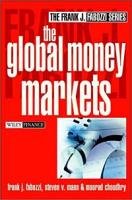
Frank J. Fabozzi is editor of the Journal of Portfolio Management and an adjunct professor of finance at Yale University’s School of Management. He is a Chartered Financial Analyst and Certified Public Accountant. Dr. Fabozzi is on the board of directors of the Guardian Life family of funds and the BlackRock complex of funds. He earned a doctorate in economics from the City University of New York in 1972 and in 1994 received an honorary doctorate of Humane Letters from Nova Southeastern University. Dr. Fabozzi is a Fellow of the International Center for Finance at Yale University. He is an Advisory Analyst for Global Asset Management (GAM) with responsibilities as Consulting Director for portfolio construction, risk
control, and evaluation.
Steven V. Mann is a Professor of Finance at the Darla Moore School of Business, University of South Carolina. He earned a doctorate in finance from the University of Nebraska in 1987. His research interests are in the area of investments, particularly fixed-income securities and derivatives. He has published over 35 articles in finance journals and books. Dr. Mann is an accomplished teacher, winning 16 awards for excellence in teaching. He is a consultant to investment/commercial banks and has conducted more than 60 training programs for financial institutions throughout the United States.
Moorad Choudhry is a vice-president in structured finance services with JPMorgan Chase in London. He previously worked as a government bond trader and money markets trader at ABN Amro Hoare Govett Sterling Bonds Limited, and as a sterling proprietary trader at Hambros Bank Limited. Moorad is a senior Fellow at the Centre for Mathematical Trading and Finance, City University Business School, and is also a Fellow of the Securities Institute. He is Editor of the Journal of Bond Trading and Management, and has published widely in the field of debt capital markets, derivatives, and yield curve analysis.
The authors wish to thank Dean Joel Smith and Professor Greg Niehaus for their efforts in bringing a Bloomberg terminal to the Moore School of Business.
The following graduate students at the Moore School of Business assisted in proofreading the book: Oscar Arostegui, Keshiv Desai, Jeffrey Dunn, and Brandon Wilson. In addition, we want to thank Michael Kenney for his assistance.
The money market is traditionally defined as the market for financial assets that have original maturities of one year or less. In essence, it is the market for short-term debt instruments. Financial assets traded in this market include such instruments as U.S. Treasury bills, commercial paper, some medium-term notes, bankers acceptances, federal agency discount paper, most certificates of deposit, repurchase agreements, floating-rate agreements, and federal funds. The scope of the money market has expanded in recent years to include securitized products such mortgage-backed and asset-backed securities with short average lives. These securities, along with the derivative contracts associated with them, are the subject of this book.
The workings of the money market are largely invisible to the average retail investor. The reason is that the money market is the province of relatively large financial institutions and corporations. Namely, large borrowers (e.g., U.S. Treasury, agencies, money center banks, etc.) seeking short-term funding as well as large institutional investors with excess cash willing to supply funds short-term. Typically, the only contact retail investors have with the money market is through money market mutual funds, known as unit trusts in the United Kingdom and Europe. Money market mutual funds are mutual funds that invest only in money market instruments. There are three types of money market funds: (1) general money market funds, which invest in wide variety of short-term debt products; (2) U.S. government short-term funds, which invest only in U.S. Treasury bills or U.S. government agencies; and (3) short-term municipal funds.
Money market mutual funds are a popular investment vehicle for retail investors seeking a safe place to park excess cash. In Europe, unit trusts are well-established investment vehicles for retail savers; a number of these invest in short-term assets and thus are termed money market unit trusts. Placing funds in a unit trust is an effective means by which smaller investors can leverage off the market power of larger investors. In the UK money market, unit trusts typically invest in deposits, with a relatively small share of funds placed in money market paper such as government bills or certificates of deposit. Investors can invest in money market funds using one-off sums or save through a regular savings plan.
The money market is a market in which the cash requirements of market participants who are long cash are met along with the requirements of those that are short cash. This is identical to any financial market; the distinguishing factor of the money market is that it provides for only short-term cash requirements. The market will always, without fail, be required because the needs of long cash and short cash market participants are never completely synchronized. The participants in the market are many and varied, and large numbers of them are both borrowers and lenders at the same time.
| Прикрепленный файл | Размер |
|---|---|
| The_Global_Money_Markets.zip | 4.34 Мб |

